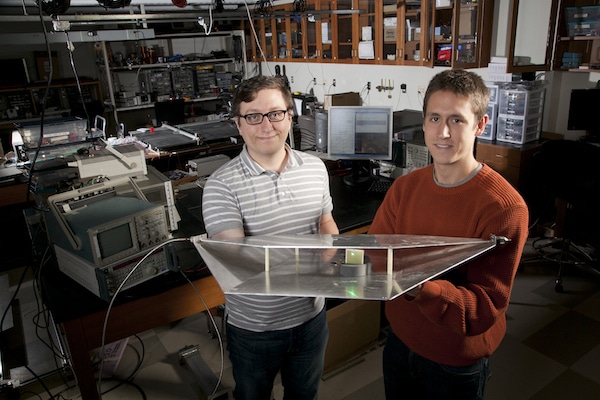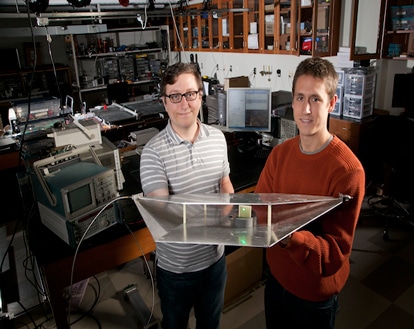
Researchers at Duke University’s Pratt School of Engineering in North Carolina have created a power-harvesting device that can be tuned to capture energy from various sources, including satellite, sound and Wi-Fi signals, and convert it to direct current voltage capable of charging small electronic devices.
While the new device is not the first “energy-harvester” ever created, it differs from previous devices because it can achieve efficiency similar to that of modern solar panels, the researchers say. The key to the device lies in its use of metamaterials, man-made structures engineered to have specific properties not found in nature.
“The properties of metamaterials allow for design flexibility not possible with ordinary devices like antennas,” graduate student Alexander Katko said. “When traditional antennas are close to each other in space, they talk to each other and interfere with each other’s operation. The design process used to create our metamaterial array takes these effects into account, allowing the cells to work together.”
“We were aiming for the highest energy efficiency we could achieve,” Allen Hawkes, an undergraduate engineering student, said. “We had been getting energy efficiency around six to 10 percent, but with this design we were able to dramatically improve energy conversion to 37 percent, which is comparable to what is achieved in solar cells.”
Katko and Hawkes, together with lead investigator Steven Cummer, a professor of electrical and computer engineering at Duke University, built an electrical circuit comprised of five fiberglass and copper energy conductors wired together on a circuit board. The device is capable of converting microwaves into 7.3V of electricity—2.3V more than the 5V provided by Universal Serial Bus (USB) chargers for small electronic devices, according to the researchers. The research results will appear in the journal Applied Physics Letters in December 2013.
“It’s possible to use this design for a lot of different frequencies and types of energy, including vibration and sound energy harvesting,” Katko said. “Until now, a lot of work with metamaterials has been theoretical. We are showing that with a little work, these materials can be useful for consumer applications.”
For example, a metamaterial coating could be applied to the ceiling of a room to redirect and recover a Wi-Fi signal that would otherwise be lost. With additional modifications, the metamaterial could be installed in electronic devices, such as a cell phone, to help recharge them wirelessly while not in use. An array of the power-harvesting devices can also be assembled to capture the signal of a satellite passing overhead.






